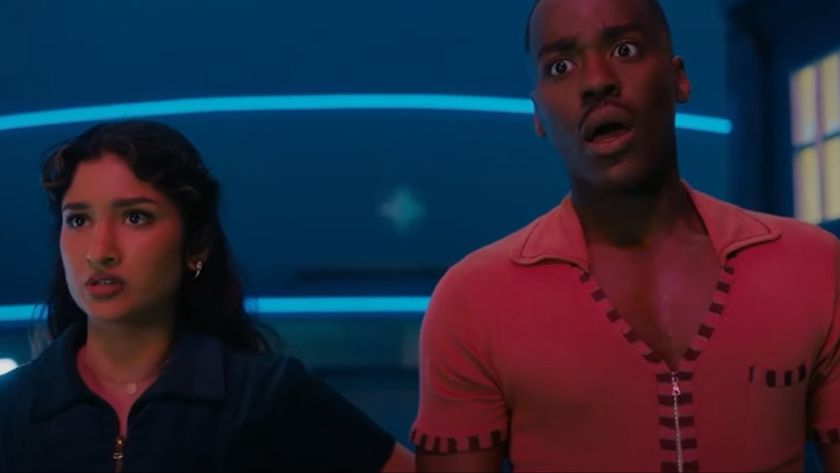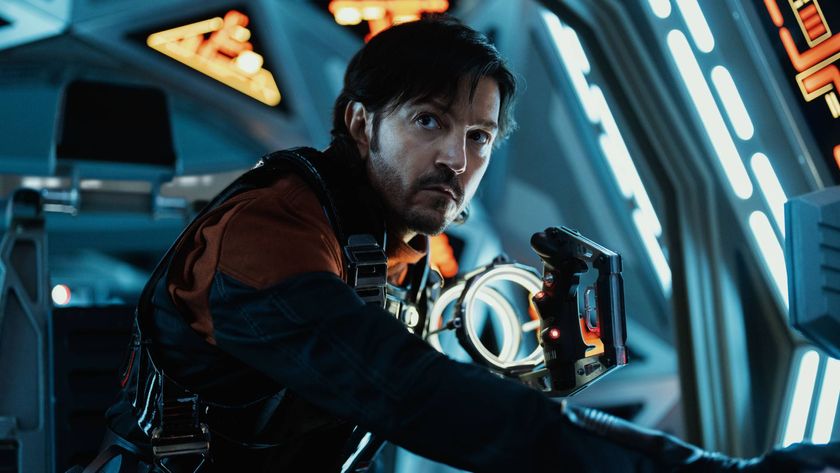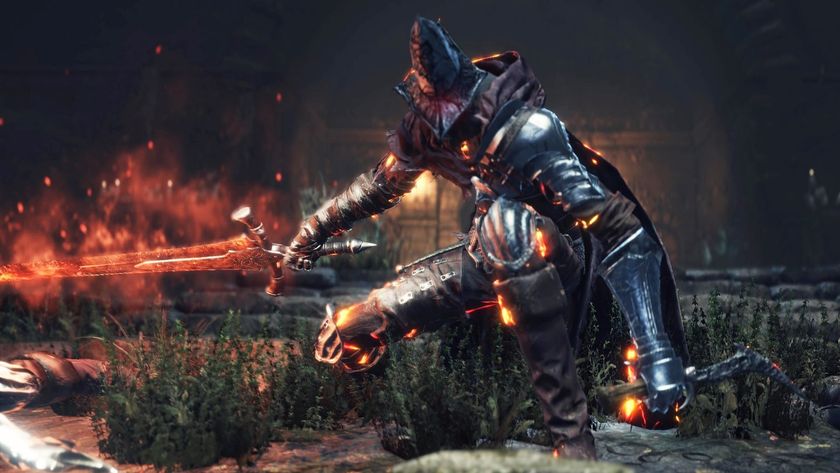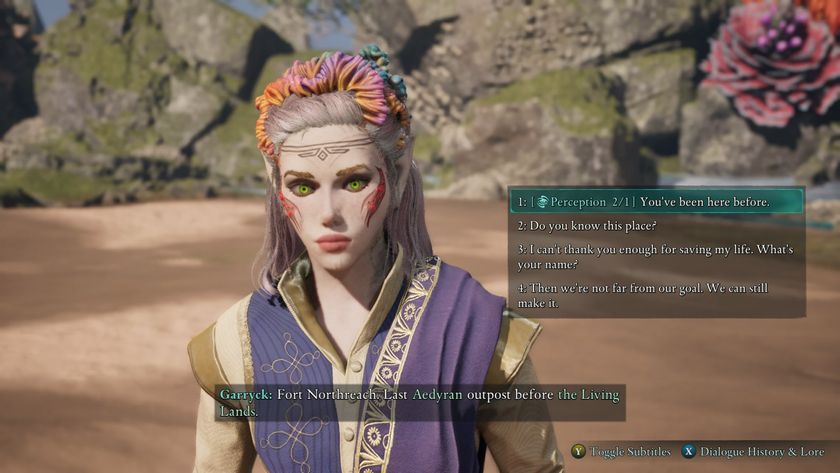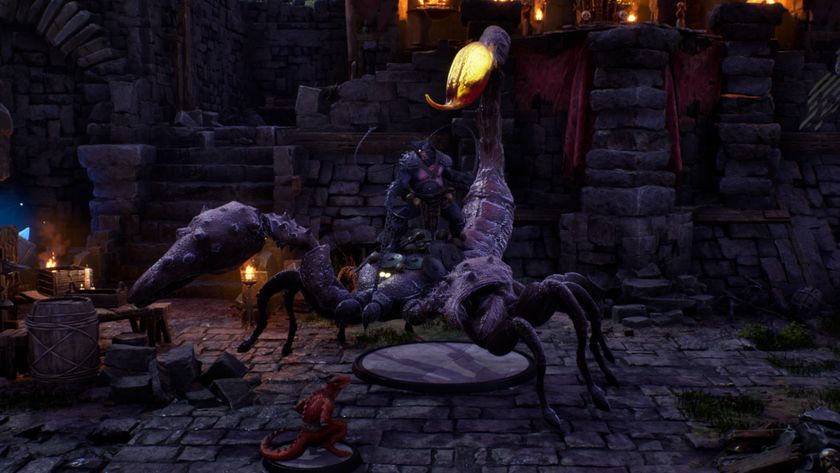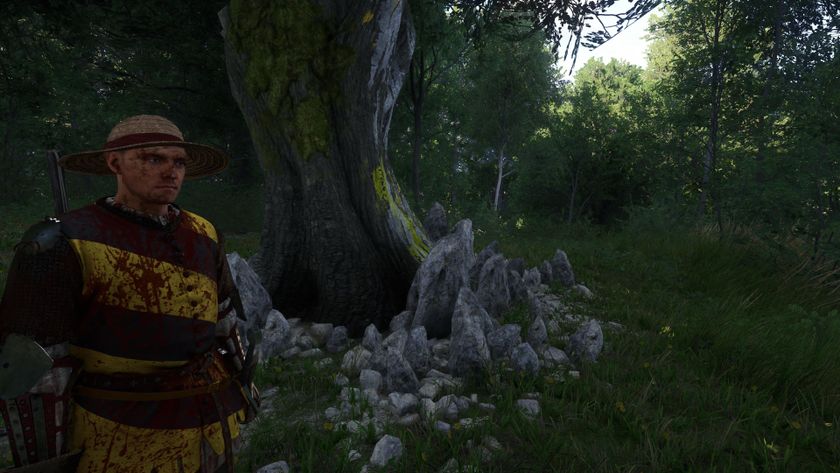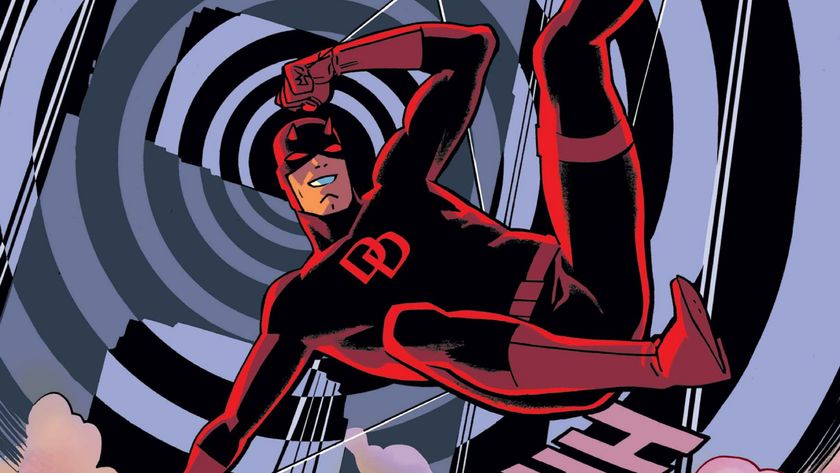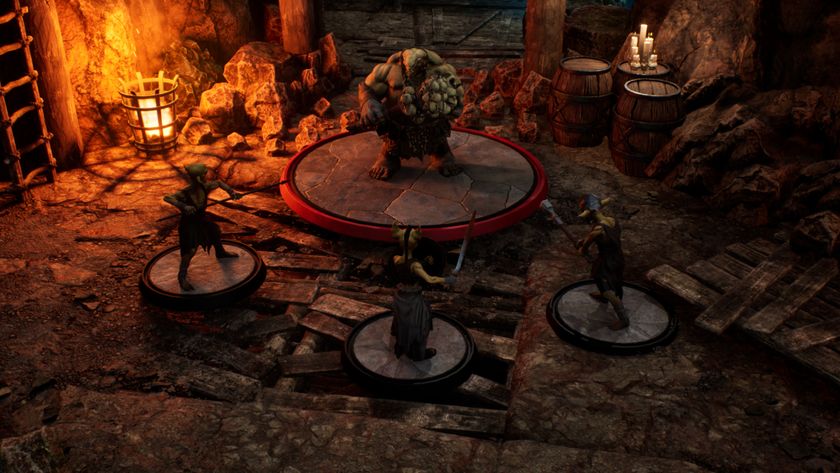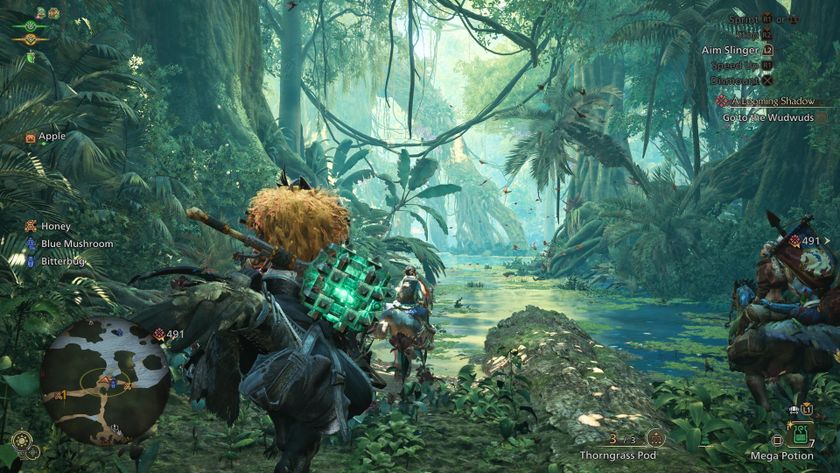The Lazarus Project creator teases how season 2 is "a very different beast"
Prepare to be bamboozled by season 2, which splices the show's temporal reset premise with proper time travel

The following feature first appeared in the November 2023 issue of SFX magazine. You can purchase a hard copy here.
Every found a place terribly familiar, but can’t put your finger on why? It’s a feeling that haunts your SFX hack all day as we visit the Newport studio that’s home to The Lazarus Project. Eventually the penny drops: last time we were here, we saw David Tennant and Billie Piper menaced by Ood, as they filmed 'The Impossible Planet' – and stepped onto the Tenth Doctor’s TARDIS. The memory feels apt given what we discover today: that the Sky drama will henceforth be conducting more “traditional” time travel.
Series one introduced the titular organisation, capable (thanks to a singularity on Earth’s doorstep) of undoing disastrous events by resetting the clock to a “checkpoint” of last 1 July. Our POV figure: hapless Lazarus newbie George (Paapa Essiedu), who has a natural ability to recall unpicked timelines. After his girlfriend Sarah (Charly Clive) was killed by a truck, he engineered the detonation of a stolen nuke to prompt his colleagues to turn back time. Naughty George.
Series two introduces a rival group. Being on set gives us the chance to explore their subterranean facility, starting with a slick Swiss laboratory – all glass-topped desks and microscopes. Other new sets we stroll through include an Alpine cottage (so expect to see a stunt sequence set in the Alps), and George’s parents’ home. The most impressive build, however, is a huge chamber which feels like an homage to Ken Adam’s designs for the Bond movies. Although the walls are mostly greenscreen, there’s an intriguing physical component: a raised platform with a track running down the middle, on which sits a small metallic capsule resembling the offspring of a bobsled and a ’50s sci-fi B-movie rocket. There are two seats inside for those about to shoot off at high velocity (with, health and safety officers will be pleased to hear, seatbelts). Referred to as “the cylinder”, this is a time machine – the sort which can transport you to any period.
Ready. Set. Go.
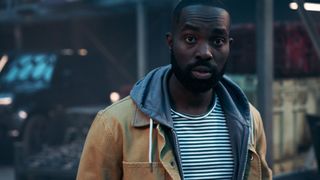
It became clear such tech must exist in series one’s finale, which saw the Lazarus team trapped in Groundhog Day hell, repeating a seemingly inescapable three-week time loop caused by the creation of a second singularity (possibly by the Chinese government), and revealed that former colleague Janet has been transported to 2012. Series two’s overarching mission: rescue Janet, escape the time loop, and save the world. Piece of cake.
“I didn’t have a lot mapped out,” confesses Lazarus creator Joe Barton, who sadly failed to secure a recommission for his Netflix series The Bastard Son & The Devil Himself. “I’d never had a second series, and was slightly expecting never to get one, so I hadn’t put a lot of thought into it.” He mentions an article he read which claimed there are two types of writers: planners and pantsers – no, not typing in your Y-fronts, but “flying by the seat of your pants”. Barton, it seems, is a pantser. “I definitely wrote myself into an interesting corner, so my main reaction to getting a second series was…” He pauses. “I don’t want to say mild panic, but definitely a feeling of, ‘Okay, we have to actually work out how to get out of this impossible situation.’”
Step one: clarify who is responsible. “The Time Break Initiative turn out to be the ones who unwittingly caused [the time loop], through their meddling in time travel experiments,” Barton explains. “They were a breakaway rival for the Lazarus Project.” So, it’s kind of an Adidas/Puma schism deal – but for time travel, not trainers? Barton laughs. “Yes, basically! Puma and Adidas, or Spurs and Arsenal, Mario & Wario… They do the same thing, but they don’t get on.” He adds that the notion of Chinese government involvement (floated in the fi ale) has been dialled down. “They have links to other governments, but we wanted to make it a more science fiction entity. We also get into the origins of the Time Break Initiative, and explore the history of the Lazarus Project and to what extent the two groups overlap.”
Sign up to the SFX Newsletter
Get sneak previews, exclusive competitions and details of special events each month!
Total time travel chaos
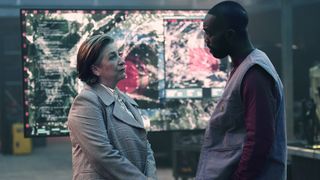
Expect to see a physical Lazarus time machine this series – several versions, in fact. While the Time Break Initiative sound like antagonists, Barton prefers to say that they and the Lazarus Project are both “morally grey organisations” with “different moral stances”. Head of Lazarus, Wes (Caroline Quentin), would see it differently. She considers true time travel “total chaos”. “Her point of view is that it’d be a disaster to create a real time machine. It’s the equivalent of creating a nuclear bomb – I think we even reference Oppenheimer. She and the Lazarus Project are very much against this technology, and a lot of the series is about how it might be a better idea to undo it existing.” The advent of this competing outfit takes the series down new avenues. “The second series is a very, very different beast to the first,” Barton emphasises. “It’s a time travel show, whereas the first one was a time loop show: the rules, the stakes, everything is different.”
That must open the door to conundrums like the Grandfather Paradox. “Yes, that idea of characters meeting themselves, going back and changing events. All that butterfly effect stuff – what happens if you change a little thing? It’s a much more complex and plotty version. But we still have the checkpoints. So it’s both concepts crashing into one another.” So it’s possible to travel back to a different year and then reset to 1 July? This could make a writer’s brain leak from their ears. “The flowcharts were numerous and very complex,” Barton says. “The It’s Always Sunny In Philadelphia meme gif – the guy at the whiteboard going insane – that was me every day! You could time-travel back to a year where there were multiple time loops, so then your time traveller’s in a time loop situation. As you change something, do you still go in the loop? It all smashed into one another. It was the hardest thing I’ve ever had to do.”
Bigger ideas

On series one, the production had to contend with Covid protocols. Does being freed from such restrictions mean series two can go bigger, scale-wise? “Actually, I think the ideas are bigger,” says Barton. “In terms of action, it may even have slightly less. The first one was more of a thriller, whereas this one has, at its heart, a more complex idea. I feel it’s more like it’s on a philosophically different scale, rather than, y’know, more car chases.” During our visit, we grab the chance to observe a scene being shot in Wes’s office in Lazarus HQ. Set in 2012, it features Wes, George and Sarah. Two seated characters – actually the same person at different ages we’re told – are unfamiliar (The Witcher’s Istredd, Royce Pierreson, plays the older version). Watching the monitors from a space directly below, we hear a crew member simulating gunshots by shouting “BANG BANG BANG BANG!”, and George saying, “I just need five minutes – I can undo this!” Sarah passes George a handgun, ushering him towards the door and urging him to “Buy us some time.” As he exits, Essiedu’s footsteps clatter on the metal walkway above our head. Close-ups are next, revealing George’s bloodsplattered shirt, thousand yard stare and heavy breathing. Between takes, the actor stays in the zone with the aid of press-ups, jogging on the spot, and some slightly unnerving animalistic growling… Down, boy.
Series one concluded with George in disgrace, colleague Archie (Anjli Mohindra) now aware of his betrayal, and Sarah – given a syringe of the serum that enables Lazarus Project operatives to retain memories of resets by George – walking into their base, having injected it. Looks like Sarah becomes a Lazarus agent herself, and George eventually returns to the fold – well, he is the lead character… We ask Barton to unpack the character dynamics. How does awareness of the resets affect Sarah? “One of the exciting things about getting a second series was the chance to bring in this character who’d been a supporting character and make her a main player,” he says. “We have a lot of fun with that. “Part of it was using her as a way of exploring the mental headspace of being in this mad situation. I was really interested in what being stuck in this three-week loop would do to a normal person and how, living in a world that’s essentially free of consequences, your morality might bend and warp.”
New faces

As for George: his main concern, initially, is finding redemption by proving himself to the colleagues he let down. “There’s no way they can properly punish him, because they’re in a three-week loop,” Barton points out. “They can’t put him in prison, because it all gets undone. It’s about him wanting them to understand why he did what he did, and trust him again.” New characters include a Time Break Initiative scientist called Dr Samson, played by Sam Troughton (grandson of Second Doctor Patrick). “He’s brought into the fold as well,” notes Barton. Genre veteran Colin Salmon is on-board as Robin Lerner, the leader of the Time Break Initiative. Archie’s late partner Ross (Brian Gleeson) will be returning, and so will “a couple of different versions” of Rebrov and Janet’s daughter Becky.
Speaking to some of the leads earlier, we were amused to discover that they’ve taken to checking in with one another on Checkpoint Day – 1 July. And when it comes to the end of that three-week time loop, Barton can’t help but remember the date… “The world ends on 21 July and then jumps back to 1 July, and 21 July is my son’s birthday,” he explains. “He’s 12, and we had a sleepover, with about nine 12-year-olds sleeping over in my house. And I did think, ‘This feels like the end of the world.’ It felt authentic!”
The Lazarus Project season 2 will premiere on Sky Max and NOW on November 15.
For more great series coming your way, check out our guide to the best upcoming TV shows for 2023 and beyond.
And for much more from SFX magazine, make sure to subscribe so you never miss another world-exclusive feature.
Ian Berriman has been working for SFX – the world's leading sci-fi, fantasy and horror magazine – since March 2002. He's also a regular writer for Electronic Sound. Other publications he's contributed to include Total Film, When Saturday Comes, Retro Pop, Horrorville, and What DVD. A life-long Doctor Who fan, he's also a supporter of Hull City, and live-tweets along to BBC Four's Top Of The Pops repeats from his @TOTPFacts account.
